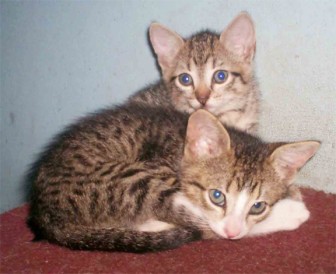(Continued)
Today, we’ll look at a very special method of breeding animals with the hope of capitalizing on specific assets of related parents. This is called line breeding. Actually, it is practised quite often here in Guyana, but not consciously and objectively. It happens more by accident or because of the laziness of the ‘breeder‘ to ascertain whether the two prospective parents are related.
I am only touching on this aspect of breeding in order to be as comprehensive and complementary as possible, so as not to omit any element about which dog breeders might need to be educated.
Line breeding
and inbreeding
The term inbreeding is usually applied only to those matings which are in the order of father to daughter, or mother to son, or brother to sister. Inbreeding is something we should not do willingly. Interbreeding among dogs further removed is called line breeding.

A common misconception is that inbreeding produces highly strung, nervous and aggressive dogs. Just because two individuals are closely related does not mean that their offspring must be unsound. It is genetic potential in the background of the pair which determines the outcome. A fundamentally sound strain remains fundamentally sound. One which has some unstable dogs in its inbreeding programme is likely to have problems.

After having line-bred for three or four generations, most breeders have found from experience that it is wise to bring in new blood. The use of a stud from a totally different bloodline may be considered. This produces an outcrossed litter and ‘reshuffles‘ the genes that have tended to become fixed, in a more-or-less predictable manner, through previous line breeding. Many times, particularly with an overly refined bitch, an outcross will give surprisingly good results. An improvement in the health and vigour of the resulting puppies is apparent from the time they are born. The process is known as ‘nicking.‘ While the litter will sometimes lack uniformity, nevertheless, some really good show dogs have been produced in this manner.
When two strains are nicked successfully, other crosses between them may work as well. Puppies from such matings usually are bred back into one of the two strains, thereby providing a basis for a new line.
One final method is to breed a dog and a bitch who are both of mixed ancestry. Neither has a line bred background. When using this approach, it is essential that one has a definite objective goal in mind. One dog may carry an attribute or quality totally lacking in the other. However, the method of breeding strengths to weakness in hopes that the strengths will win out sometimes is disappointing – too often it is weaknesses which win out, producing puppies of inferior quality. Because of the infinite possibilities when we are dealing with genes and chromosomes and with biological entities, the science of genetics is not as exact as one would wish it to be; that is why we said what we said at the very outset.
This week‘s article might seem complicated. It might need a second read. In presenting such a text, we are trying to reduce the ‘hit-or-miss‘ possibilities. Genetics (breeding) will remain an inexact undertaking, for the time being. In the future, we might be able to manipulate the process with much more dexterity and increase the chances of producing the exact offspring which is desired. Here is where I get scared. It follows that some smart scientist will want to use the technology in human breeding. The Brave New World would then be around the corner. But I am now entering the realm of speculation – and that’s not what this column is about.
Please implement disease preventative measures (vaccinations, routine dewormings, monthly anti-heartworm medication, etc) and adopt-a-pet from the GSPCA’s Animal Clinic and Shelter at Robb Street and Orange Walk, if you have the wherewithal to care well for the animals. Do not stray your unwanted pets, take them to the GSPCA’s Clinic and Shelter instead. If you do not wish your pet to have puppies or kittens, you may exploit the GSPCA’s free spay and neutering programme. If you see anyone being cruel to an animal, or if you need any technical information, please get in touch with the Clinic and Shelter by calling 226-4237.





